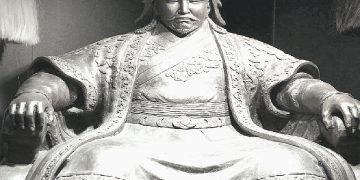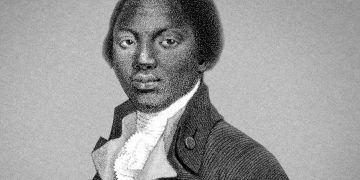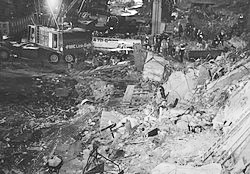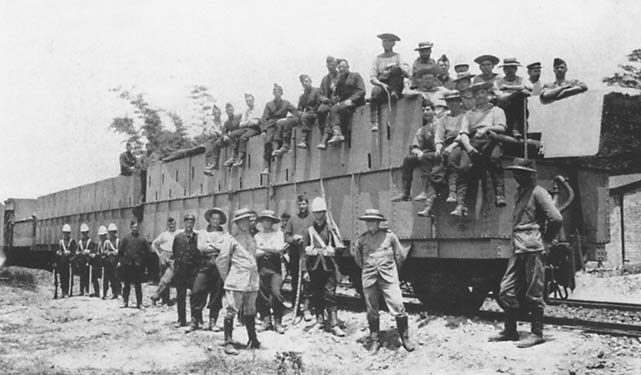After the battles of December 1899, the intensity of the struggle on the Anglo-Boer front decreased markedly. Both sides used the time of relative calm to build up their strength and develop plans for a new campaign. Of particular interest are the new tactical and strategic techniques of the British, because the fighting of the first period of the war not only brought sensational victories to the Boers, but also changed the face of this and future conflicts.
Transformation in military affairs
The first English battles with the Boers took place according to a similar scenario. Attempts to act in full accordance with the military science of the 19th century most often ended for the soldiers of Her Majesty very deplorably. The achievements of the Boers on the battlefields were bewildering among both the British command and European observers.
The tactics of the columns and the loose order, first successfully applied during the Seven Years’ War of 1756-1763 by the Russian army, experienced a crisis at the turn of the 19th and 20th centuries. The combined use of the loose structure of light infantry and columns of linear infantry is hopelessly outdated. Troops lined up battalion could no longer effectively carry out combat missions in conditions of the massive use of new weapons. Progress in small arms has transformed military affairs. The appearance of multi-loaded rifles, conical elongated bullets instead of round Mignier samples – all this increased the range, accuracy and speed of fire. The use of smokeless gunpowder made it possible to mask the positions of shooters well. The use of machine guns was also an innovation.on the battlefield, which repeatedly multiplied the firepower of rifle units. Similar processes took place in the development of artillery systems. Rifled guns, which were widely used in the second half of the 19th century, surpassed smooth-bore samples in range and accuracy of shooting. All this led to changes in the tactics of warfare.
Field Marshal Roberts in a new post
The new commander in chief of the British Army, Field Marshal Roberts, on arrival in Cape Town on January 10, 1900, began to reorganize the available forces. What he saw did not inspire much optimism. The shooting training of the British soldiers was rather weak. Nobody trained the fighters to find targets on their own during the battle, especially in the long-range shooting mode (according to the then ideas, volley fire was one of the main elements of the battle, followed by a bayonet attack). Reconnaissance was badly done, the British infantry were not prepared for patrols and military guard. The cavalry, as before, attacked the enemy in close formation, they did not know how to fight in a hurry, as the Boers did. We did not discuss raids on enemy rear areas at all.
For the success of the campaign, an urgent reorganization of forces was necessary, and Field Marshal Roberts, along with the new chief of staff, Lord Kitchener, was very welcome. However, in the reports of the military attaché in London, Colonel of the General Staff of the Russian army A.S. Ermolova sounded different estimates:
Transport
Seeing one of the reasons for the failures in the lack of mobility of the troops, the new command radically reduced the convoys. Leaving only the essentials in the troops, it was possible to increase the mobility of the formations, which would make it possible to deliver unexpected strikes, increasing the overall chances of success. Field Marshal Roberts was pushed to this conclusion not only by examples of military art of past eras, which were included in the textbooks for training command personnel, but also quite practical considerations.
The defeats of the British were largely predetermined, including due to the excessive linking of operations to the railway tracks, which fettered the troops and deprived them of operational space. At the same time, moving across territories away from the main communications required eliminating the shortage of wagons and replenishing the food supplies of the marching troops. It was decided to transfer all vehicles not directly involved in the battles to the units operating on the front lines. For this, on the one hand, brigade food transportation services were disbanded, on the other hand, the two-day battalion supplies of food and fodder were reduced (from 880 to 560 pounds). In addition, the troops received an order to leave all the tents, which immediately reduced the number of wagons by 180 units.
Reorganization and definition of strategy
Another problem that Roberts had to puzzle over was the reorganization of the fighting forces. Colonel of the General Staff of the Russian Army P.A. Stakhovich, seconded to the theater of operations in South Africa, wrote in a report:
“In peacetime, the British army does not unite into the highest tactical units [battalions of the regiment, as a rule, were scattered throughout the empire – approx. author], it was supposed to do this in the military, but the situation prevented: reinforcements were soon required, which was at hand, was taken and sent, where needed. Thanks to this, many parts got messed up, and a new, impromptu organization appeared. This is hardly good. ”
Debugging the interaction of units under enemy bullets is not the best idea for victory in a battle, especially when it comes to units whipped up from different parts of the empire. In such a confusion, it was extremely difficult for the headquarters to command troops. In addition, British public opinion played a negative role. The second lieutenant of the Russian army Evgeny Augustus, who participated in that war on the side of the Boers, wrote:
“Both Buller and Methuen very easily succumbed to the pressure of public opinion in England, which, under the heavy impressions of the first failures, demanded victories at all costs, and mainly the proceeds of the besieged garrisons of Ladysmith and Kimberly, which caused these generals, dashing grunts , but bad tactics, to carry out a number of rash attacks, ending in a deplorable defeat of the British troops. Those who followed the course of military operations could not fail to notice that all the British generals, before Roberts, did not have a strictly considered strategic plan; their fault is that when choosing the main operating line they did not want to abandon private considerations such as the liberation of the besieged garrisons and the desire to restore the fallen prestige of British weapons with a loud victory. ”
The situation was aggravated by the demarche of the former British commander in chief Buller, who had arrived in the troops to directly command units on the battlefield. The untimely abandonment of his headquarters in Cape Town made an additional discord in the command and control system. The elimination of the blunders of the previous leadership provided Field Marshal Roberts and his generals with work for a whole month. After that, he struck his main blow at Kimberly, not becoming, unlike the previous command, attack in several places at once.
Experiments are ongoing
The successful actions of the Boer commando, which moved mainly on horseback, inspired the British to use the same parts at home. Four created brigades of traveling infantry were to make a significant contribution to achieving an advantage over the enemy. They were quickly created from 8 companies of cavalrymen, 24 companies of infantry and 2 regiments of traveling infantry of the overseas possessions of the empire. The idea was only partially successful: the new formations did not have the desired effect (the riders simply did not want or did not know how to correctly combine the cavalryman’s skills with conducting combat on foot). As a result, they began to be used mainly for protection during transportation of goods.
The best doesn’t mean universal
As noted above, the application of the previous battle tactics (frontal attack of enemy positions in close formation) led to heavy losses. Practice itself pushed the British to change tactics, so the transition to the use of rifle chains was justified and helped the British avoid unnecessary casualties in the future. However, relapses of attacks in close formation took place later – for example, in the Battle of Biddulfsberg in May 1900, a small detachment of Boers defeated a large British group (about 4,000 people), including the Guards Grenadiers.
For the first time, the new construction was applied on March 29, 1900 at Cary Siding near Brandfort. Every two companies of the British battalions stormed the heights were lined up in long lines with a large interval between the soldiers. The British chain responded to the dense fire of the Boers with short dashes forward. At the same time, part of the attackers, buried in the sand, covered the attackers with their fire, after which they changed places. At a distance of about 200 m behind the advance detachments, six reserve companies moved in three lines.
The new tactical technique allowed to significantly reduce losses and was best suited for attacking in open areas, which was proved in practice in subsequent battles. However, he did not become a universal means of victory, which still largely depended on the commander’s ability to control the situation on the battlefield. The first use of a tactical novelty did not bring the expected results to the British, because they chose the most fortified position of the Boers as the main goal of the assault. With such a battle organization, one could hardly expect impressive victories. In addition, the lack of proper intelligence again affected it. As a result, the simultaneous introduction of all available forces into the battle (the British deprived themselves of reserves) and the excellent actions of the Boer riflemen in defense helped the latter to successfully confront the four times superior enemy.
Armored trains
The railways, supplying the army with everything necessary, were required to be protected from the stinging injections of Boer commandos. This prompted the British to create the so-called blanched trains. As often happens, at first there was no single plan for booking “railway horses”. Sheathe a standard carriage with steel sheets several millimeters thick, pieces of corrugated iron or increase protection with ordinary rails and sleepers – all this depended on the decision of the particular commander, the presence or absence of improvised means. As a result, the British immediately used three types of interlocked trains, which differed from each other in their level of protection and armament.












